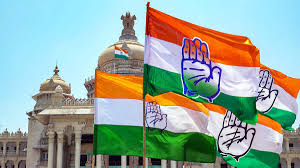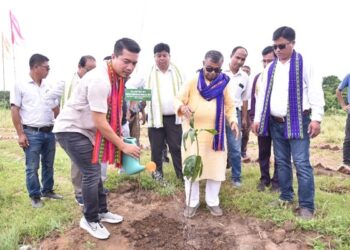Agartala, January 6:
Tripura’s Fisheries Minister, Sudhangshu Das, has urged the central government to provide financial assistance for the development of 12,000 to 15,000 hectares of unutilized water bodies in the state to boost fish production and achieve self-reliance in fisheries.
Speaking at the North East Region States Meet 2025 on the Development of Fisheries and Aquaculture, held at Radisson Blu Hotel in Guwahati, Das emphasized that Tripura has immense potential to increase fish production if proper infrastructure including reviving and timely funds are provided.
Das highlighted that under the Pradhan Mantri Matsya Sampada Yojana (PMMSY), Tripura received Rs 148 crore in the past five years, of which Rs 58.59 crore has been disbursed and Rs 42.21 crore utilized. However, Rs 16.38 crore remains unutilized, with Rs 2.68 crore surrendered due to limited scope for success in biofloc and pearl culture initiatives.
He pointed out that biofloc technology requires uninterrupted power supply, which is difficult to ensure during Tripura’s monsoon season, leading to poor outcomes in the sector.
The Minister also raised concerns about the timing of fund releases, often occurring at the end of the financial year, coinciding with the onset of the monsoon. As fisheries infrastructure development—such as digging and renovation of water bodies—is mainly carried out in winter, project implementation gets delayed, and the submission of utility certificates is affected.
He requested early disbursement of funds to complete projects within the stipulated timeline.
Das said that Tripura currently has about 2 lakh fish farmers and 38,594 hectares under pisciculture, producing 85,000 metric tonnes (MT) of fish annually. With 98% of the population consuming fish, the state has a high demand of 1.17 lakh MT, leaving a deficit of 31,000 MT.
This shortfall is presently met by imports from West Bengal, Assam, Andhra Pradesh, and Bangladesh.
Das stated that the state government has submitted a separate proposal seeking financial assistance to revive 12,000–15,000 hectares of unutilized water bodies for fisheries.
He expressed confidence that developing these areas could significantly reduce the production gap and minimize dependency on imports.
“Given the limited land available for pisciculture, we must adopt scientific methods for maximum yield while renovating and utilizing unused water bodies,” Das said.
The meeting was organized by the Department of Fisheries under the Ministry of Fisheries, Animal Husbandry, and Dairying. It was attended by Union Fisheries Minister Rajiv Ranjan Lallan Singh, Union Ministers of State S.P. Singh Bhagel and George Kurian, along with Fisheries Ministers from all North Eastern states.
Das concluded that Tripura’s fisheries sector has the potential to become self-sufficient if central support is extended for infrastructural upgrades and sustainable practices.








































